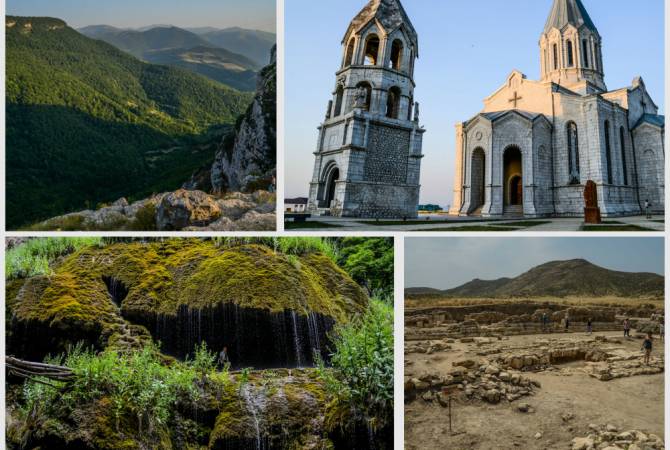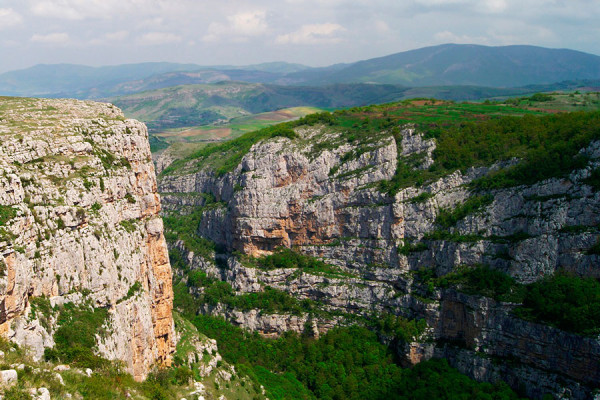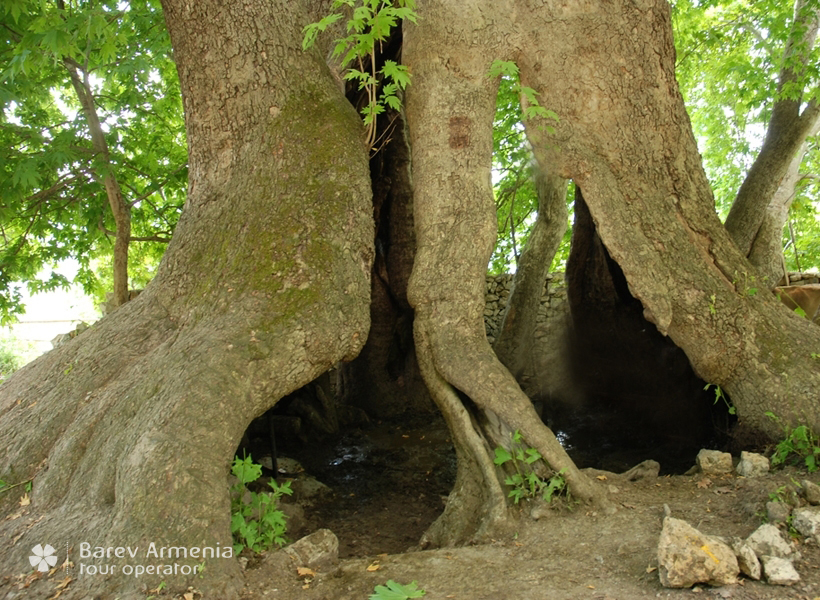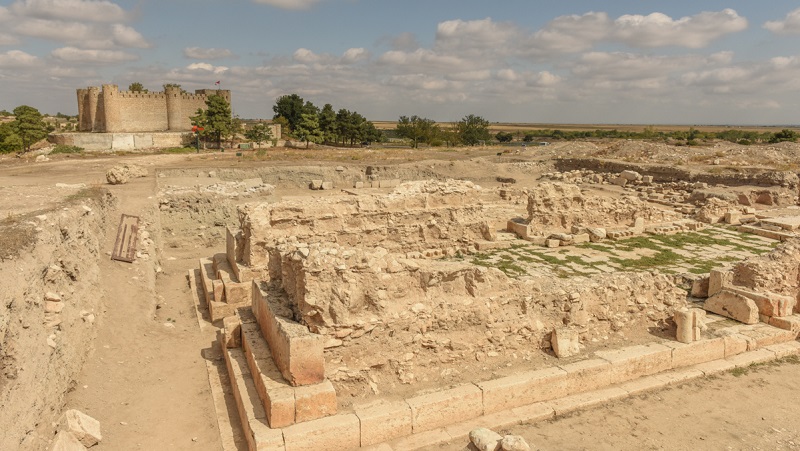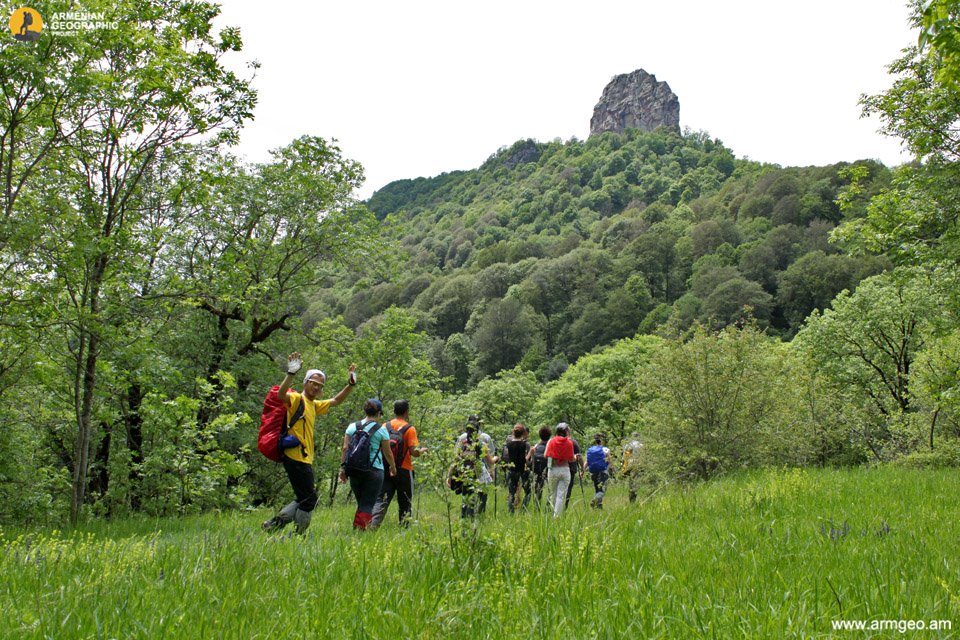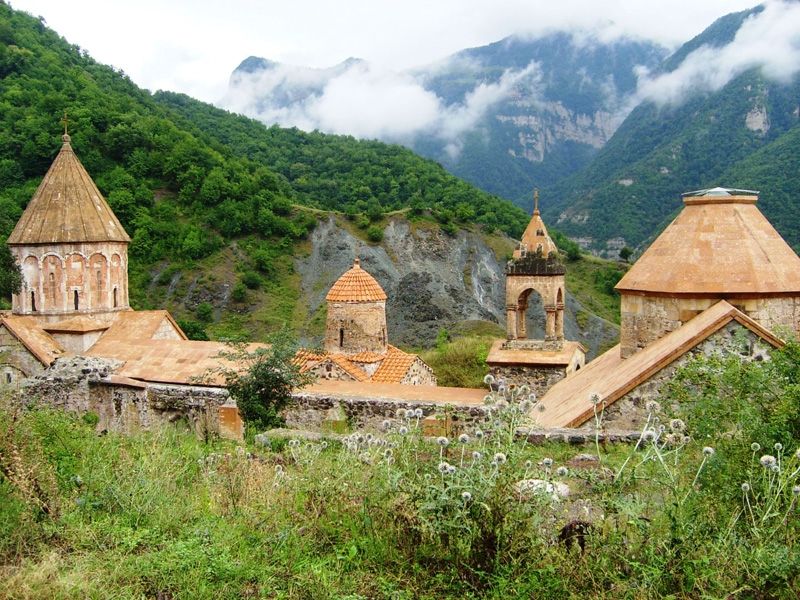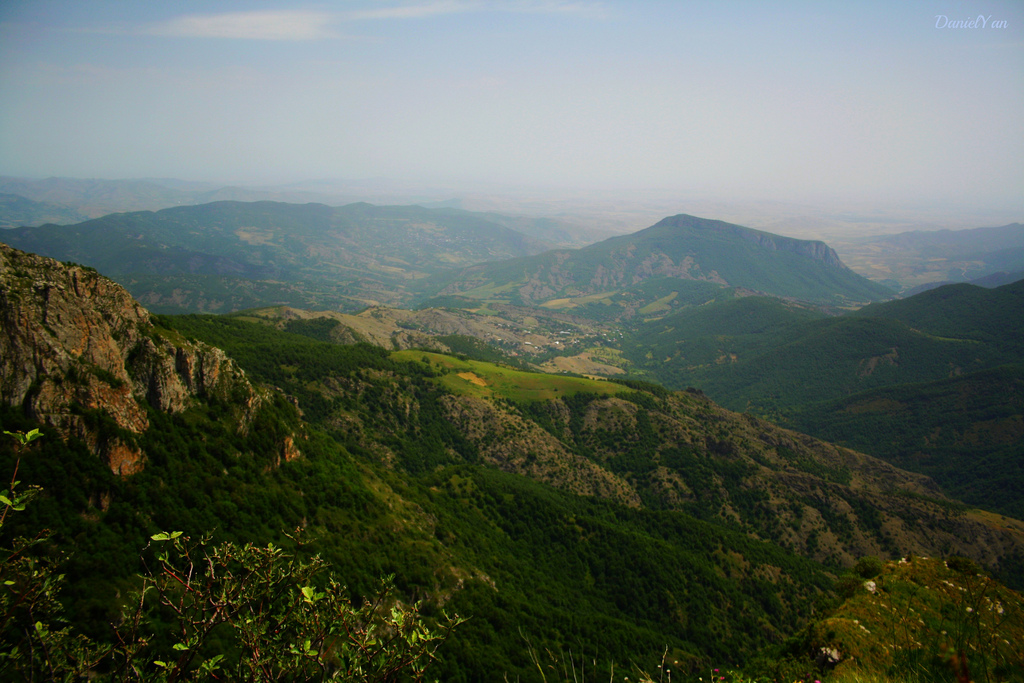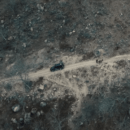Artsakh has numerous places for tourists to visit: those places offer unique impressions both to those interested in archeological excavations, to those appreciating the unique architectural style and interesting solutions, as well as to adventure tourism lovers.
ARMENPRESS has identified the 10 best places in Artsakh that are worth visiting and observing.
Jdrduz – Canyon of Hunot
If you want to see the whole magic of the Artsakh nature, you need to definitely visit Jdrduz, the same Katarot, which is located on the edge of the Shushi city, on the top of the rocks. Rocky curves, ruins of ancient mills, challenging bridges, funny wooden people, resting benches and finally tourists – this is what you can see on the road to the Canyon of Hunot just below Jdrduz.
Tnjri
One of the ornaments of Artsakh is the Tnjri – a giant plain tree. The tree is situated nearby the Skhtorashen village. It is already 2035 years old. The hollow of the tree is 44 sq.m thanks to which 100 people can stand there. The circumference of the tree is 27 m and the height is more than 54 m. In the vicinity of Tnjri you can see numerous historicalcultural monuments. The Tnjri for the Artsakh people is not just a tree, rather it is a pilgrimage place.
St. Ghazanchetsots Church in Shushi
Shushi is one of the cultural cities of Artsakh. In addition to ancient historical buildings, museums, the tourists can be attracted by the Holy Savior Ghazanchetsots church which has been built in the 19th century in the center of Shushi. As an architectural structure, the church attracts not only by its color, but also by its unique dome and engravings. The bell tower is built in front of the cathedral. The church has a part where acoustic qualities change the human voice.
Tigranakert
The city of Tigranakert, named after Tigran the Great, is located in the Martuni region of Artsakh. The city was built in the 1st century BC. In 2008 state historicalcultural reserve has been created at the city’s excavation site where visitors can get information on the city’s centuriesold history. Numerous excavations have been carried out in the territory of Tigranakert. The excavations of 2005 revealed that Tigranakert had a bulwark fortified district like the medieval classical cities, a commercial or central district, large agricultural suburbs.
Gandzasar
Gandzasar monastery located in the Martakert region as a unique architectural structure attracts tourists to a great extent especially for those who choose Artsakh as a tourism destination during summer. The 13century monastery is nearby the Vank village: the monastery’s restoration works launched in 2000. The book about the history of Gandzasar translated into 11 languages, makes the tourists’ visit more accessible and easier to the monastery. The Gandzasar matenadaran named after Mesrop Mashtots, is nearby the Vank village.
Kachaghakaberd
Kachaghakaberd is a mountaintop fortress located between Pteretsk and Kolatak villages of Artsakh. The peak of the mountain on which the fortress is standing is especially visible on the way from Stepanakert to Gandzasar. It is located at a height of more than 1700 meters, surrounded by vertical limestone cliffs with the heights of 50–60 meters, has a hardtoreach entrance from the southern side of the fortress.
Azokh cave
The Azokh cave is an important archaeological site which is nearby the Azokh village of Artsakh’s Hadrut region. During the excavations in 1968 the Neanderthal man’s jaw was discovered, 300.000 years old. The Azokh cave is a state natural reserve which is in the spotlight of not only Armenian, but also foreign archeologists. ‘Azokh cave and the Transcaucasian corridor’ book was published in 2016 which presents the results of archeological works that lasted for over 10 years.
Dadivank
Dadivank monastery, 913th centuries, is another historical site of Artsakh located in the Dadivank village of Shahumyan region. The monastery includes also the St. Mary Cathedral the frescoes of which were cleaned and renovated by foreign specialists. According to the document signed by 16 members of the Parliamentary Assembly of the Council of Europe (PACE) on October 8, 2001, the demolition of Dadivank in Artsakh is one of the shocking facts of the Azerbaijani policy. The Armenian troops liberated Dadivank on March 31, 1993.
Dizapayt mountain
The mountain is located in the Hadrut region. The second name of the mountain is Ziarat. The peak of the mountain is one of the historical holy sites of Artsakh.
Janapar Trail hiking route
The Janapar Trail is a 500km (311 mile) hiking trail taking you past high mountains, over hills and through valleys and canyons, discovering many ancient monasteries. It starches from Vardenis to Hadrut region.

